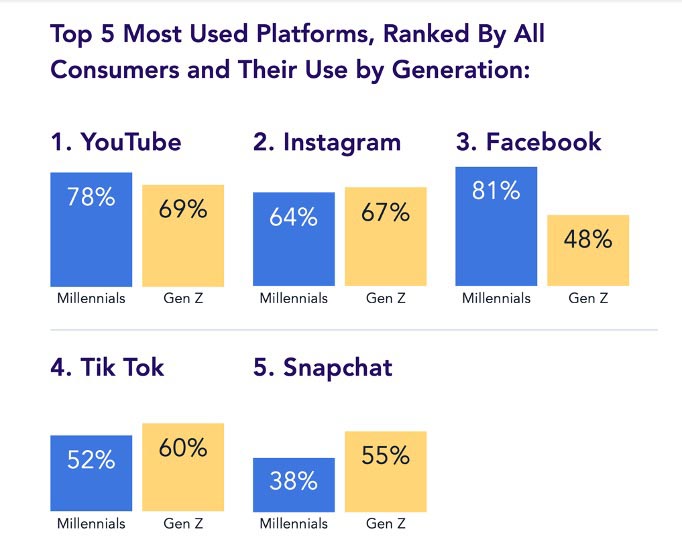When was the last time you thought about influencer marketing? It’s a powerful marketing tool, and it’s growing. In fact, eMarketer predicts that 86% of marketers will use influencer marketing by 2025, and budgets are sizeable. According to Traacker, 51% of marketers spend between $50K–$500K per year on influencer marketing, and 15% spend $1M+. More than half of marketers (54%) feel that influencer marketing has increased their brand awareness, and even more significantly, 82% see it driving sales.
But we’re the printing industry. What does this have to do with us? The answer is that influencer marketing is a channel like any other. If there are opportunities to work it into a client’s marketing strategy (including the use of smaller or micro-influencers), you want to know about it. There are plenty of ways for PSPs to add value to an influencer campaign.
According to Traacker, investment in influencer marketing is expected to grow to $5 billion next year in the U.S. alone. No wonder—Traacker finds that 70% of consumers are more likely to buy a product from a brand if that brand works with an influencer they know and trust, and more than half (59%) look to influencers for product recommendations. Traacker’s 2022 Influencer Marketing Impact Report analyzes survey data from 1,000 Gen Zers and Millennials to better understand how influencers, content, and social platforms have shifted consumer purchase behavior, as well as data from 500 U.S.-based marketers to provide a snapshot of brand budgets, team structures, and influencer marketing strategies.
Shoppers’ Top Social Media Platforms
So which channels are social media users consuming the most (defined as at least once per week)? In other words, where do your clients want to find and woo influencers? Consumers ranked them as follows:
- YouTube
- TikTok
- Snapchat
- Reddit and Pinterest (tied)
This ranking is heavily influenced by generation. Millennials are twice as likely to use Facebook as Gen Z, for example.

What’s interesting is that marketers align their influencer efforts differently than shoppers prioritize the platforms they use. Marketers are focused on Facebook the most (68%), followed by Instagram (63%) and YouTube (48%).
Content Types Are Shifting
The reports notes that the popularity of YouTube might be due to a larger shift in the way that consumers engage with content. “A few years ago, highly polished Instagram photos were seen as engaging—now, 45% of all consumers say that short videos are the most engaging content type.”
Indeed, the report continues:
Opinions about other content types vary between Gen Zers and Millennials. For example, Gen Zers gravitate more towards long videos and live streaming, while stagnant photos and written posts draw more Millennials. We are seeing this consumer shift towards video content in social data too. Over the past year, certain categories of influencer content have seen decreases in likes and comments, but stark increases in video views. We think this is because consumers are more likely to show interest in video content by simply watching or re-watching the post instead of clicking or commenting.
Because social media is increasingly a place where consumers shop, influencers also have the ability to drive sales directly through their posts and feeds. But if this is one of your goals, then it’s important to know that consumers rank the platforms differently when it comes to shopping (as opposed to simply engaging with them). Facebook tops the list, followed by Instagram, YouTube, TikTok, and Pinterest. Shoppers also prefer to buy certain types of products on social media over others, and this varies further by generation. When doing influencer marketing, you cannot make generalizations. Do your research.
There is caution here, too. Influencer marketing must be genuine and authentic just like any other type of marketing. EnTribe finds that 85% of U.S. consumers find influencers to be inauthentic and/or unrelatable and 29% say influencer content can actually hurt their perception of a brand. So influencers (and influencer strategy) must be chosen and developed carefully.
Where can PSPs play a role? Influencers must be courted in the first place. Just as any other target audience, influencers must be made aware of a brand, educated about the value of a product, and convinced that it is a match that makes sense for them. In this respect, it’s no different from winning over any other audience. These efforts should include one channel that we tend to reserve for higher value targets: gift boxes. According to Traacker, 37% of marketers send gifted products on a quarterly basis, and 34% do so on a monthly basis.
One area where marketers are looking for support? Measurement.
As influencer marketing programs mature and marketers look to scale, one of the biggest roadblocks has always been measurement. However, this is no longer due to a lack of data, but to a lack of coordination and transparency….Performance metrics are great, but they don’t give you a concrete understanding of how to improve. This is why it’s critical for marketers to also leverage cost equivalency and spend efficiency metrics.
So how can PSPs tap in to influencer marketing? By treating this audience like any other audience and using all of the tools—the full range of available channels—to reach and woo them. This is an opportunity to pull out the higher-end embellishments, three-dimensional and interactive print elements, and gift boxes/kits. Think of engaging with this audience as you would the C-Suite. How would you go about that?
Is influencer marketing on your radar? Is it something you are pitching to your clients or, if they are already doing influencer marketing, asking how you can get involved?










Discussion
Join the discussion Sign In or Become a Member, doing so is simple and free